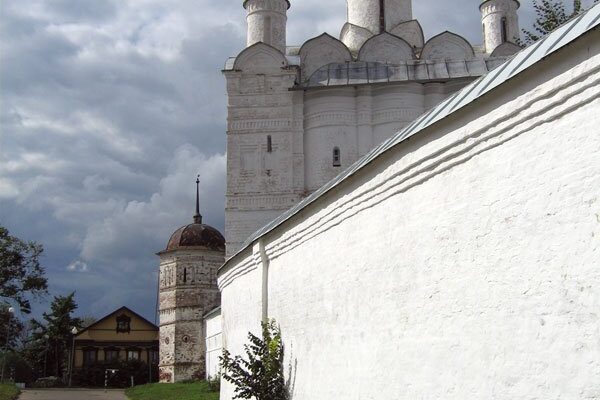Pokrovsky Nunnery in Suzdal
The Pokrovsky Monastery in Suzdal is a small but majestic Orthodox shrine whose snow-white walls rise on the gentle bank of the Kamenka River in the northern part of the city. The main buildings of the complex were laid more than 650 years ago, but until today none of them has survived in pristine condition. For many centuries the monastery served as a prison for women of noble families who were forcibly tonsured into nuns. The complex fate of the Pokrovsky Monastery is inextricably linked with Russian history and is surrounded by legends.
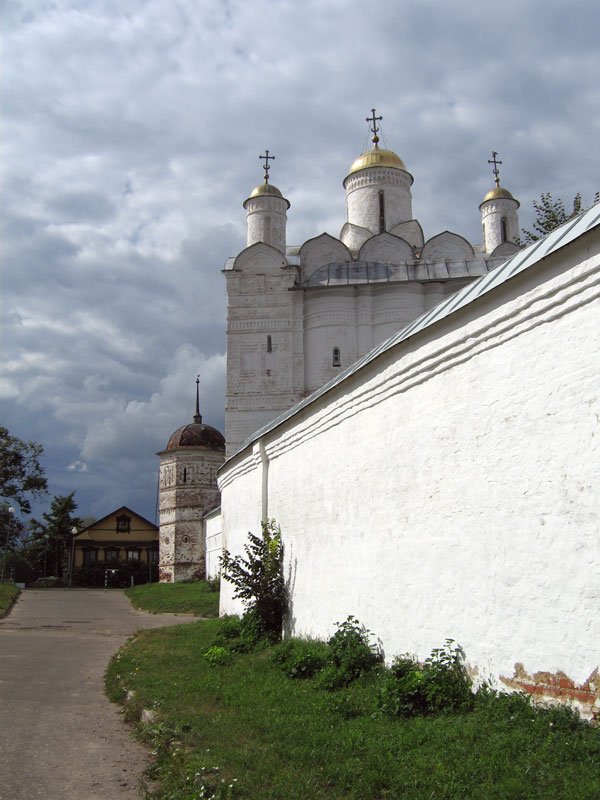
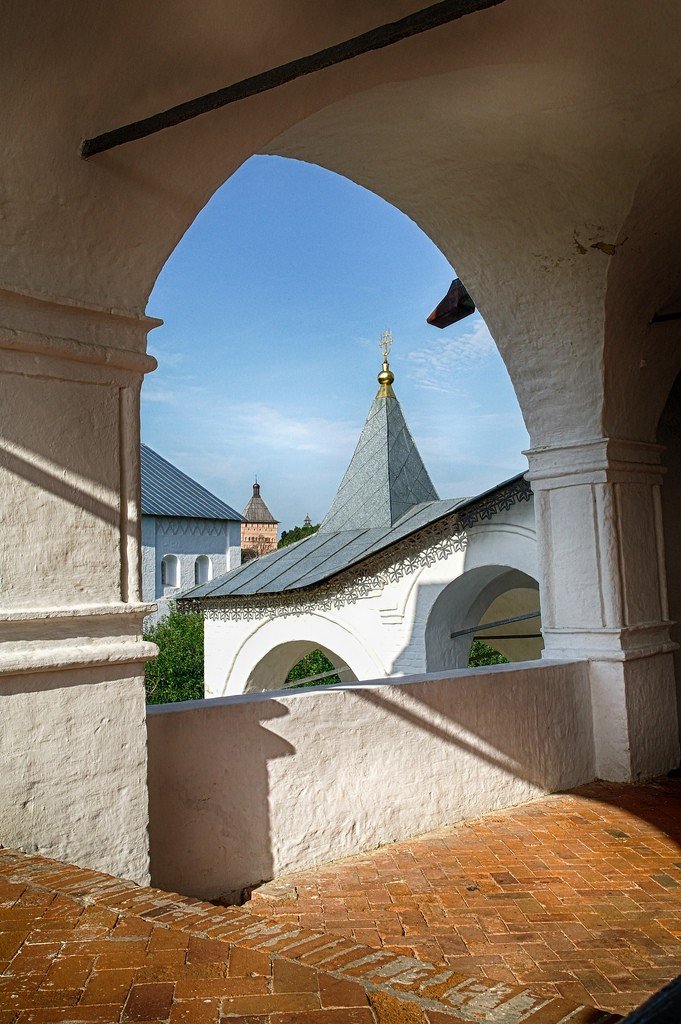
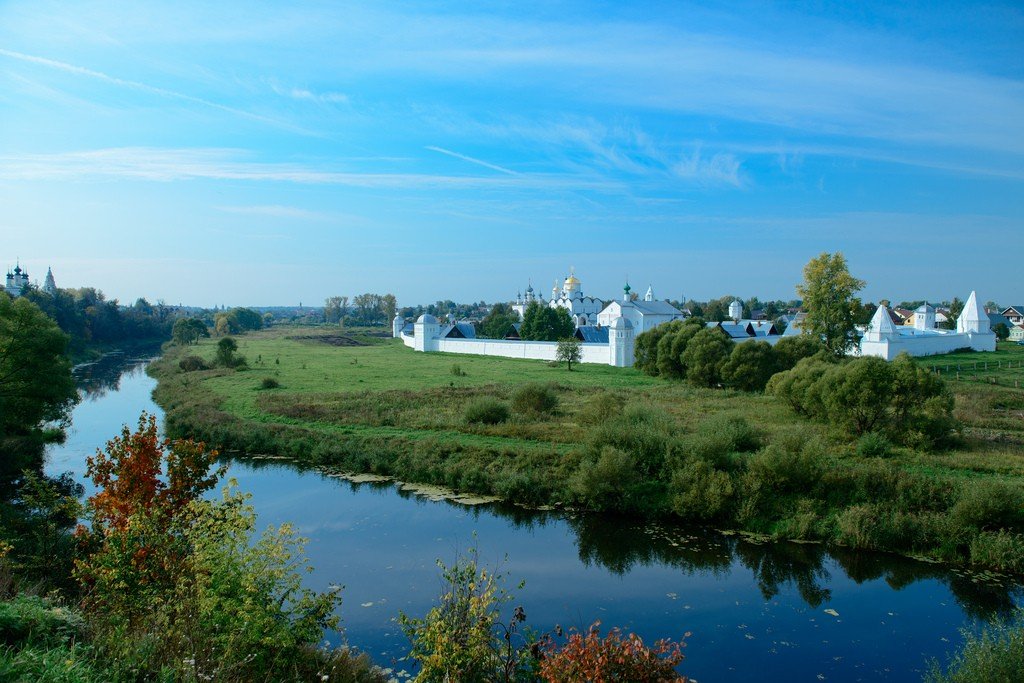
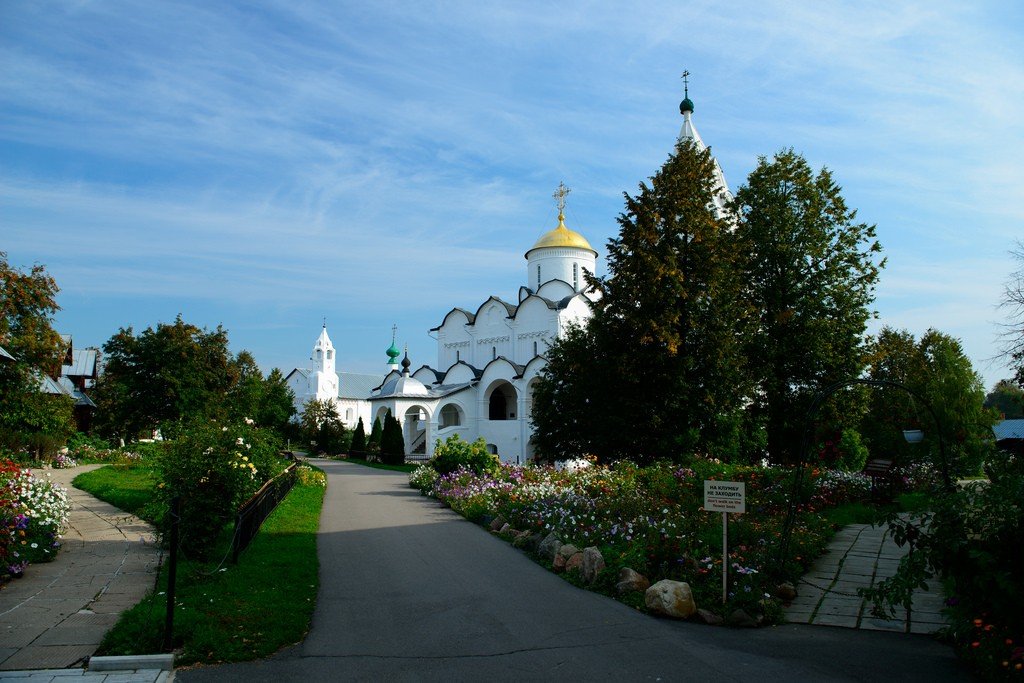
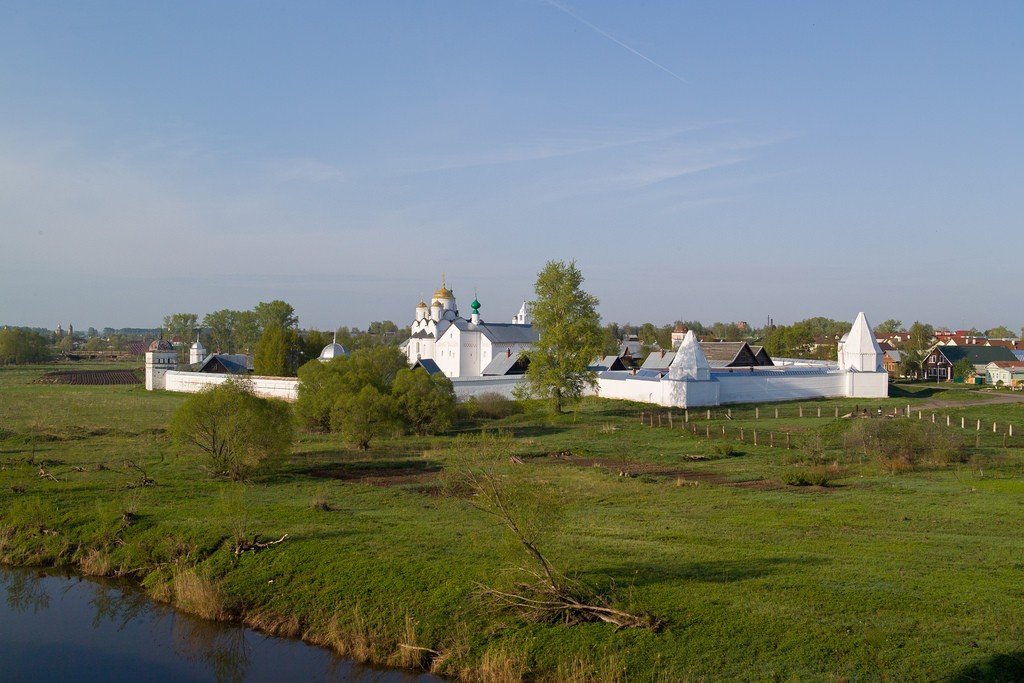
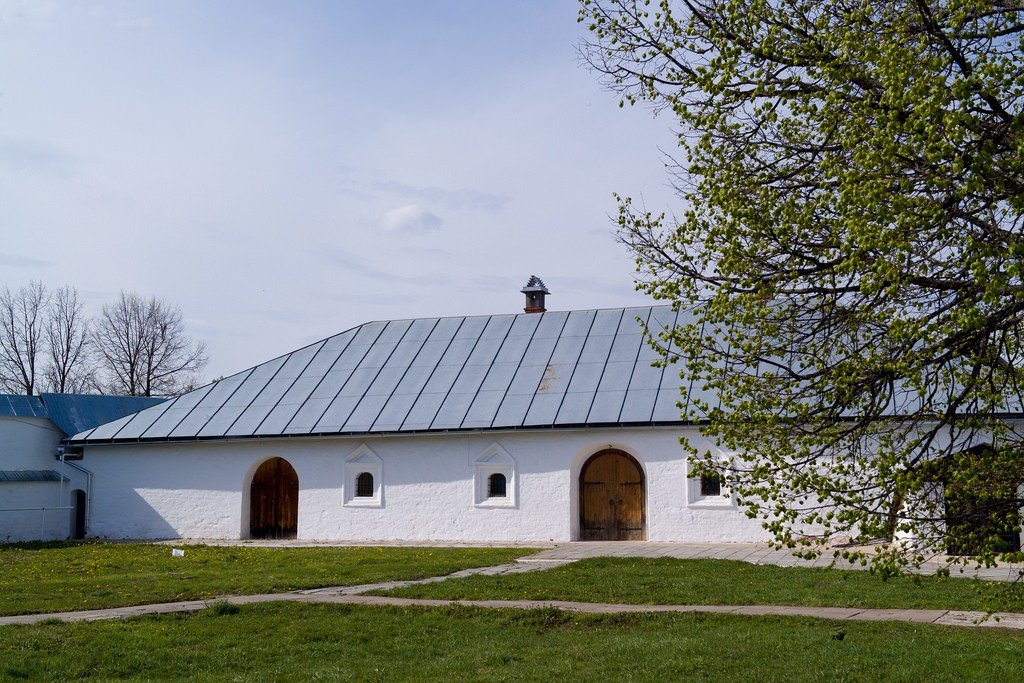
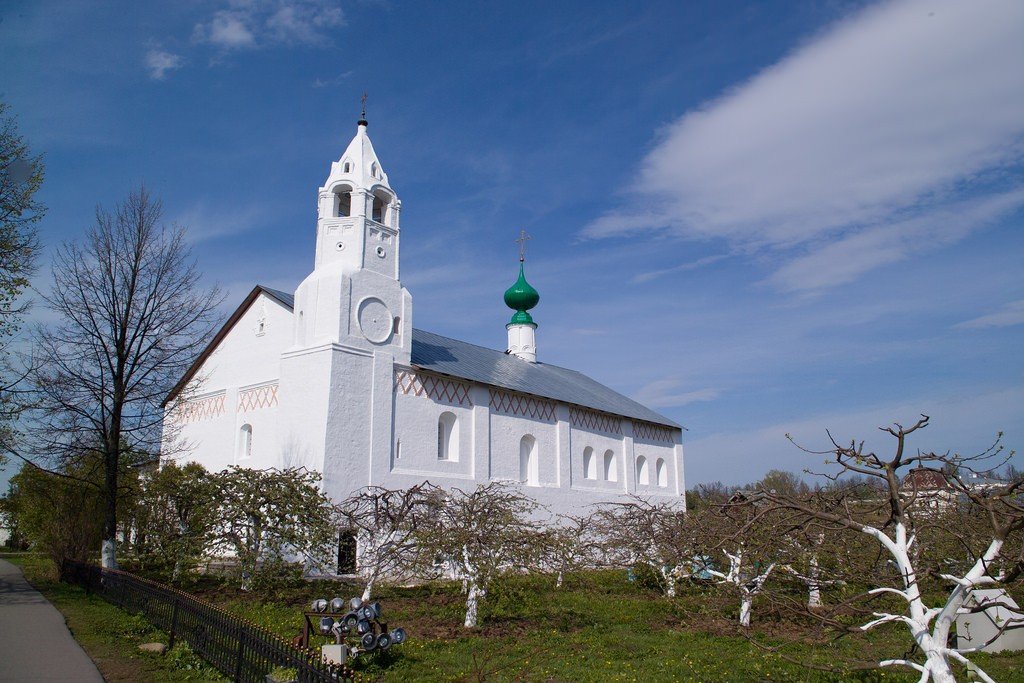
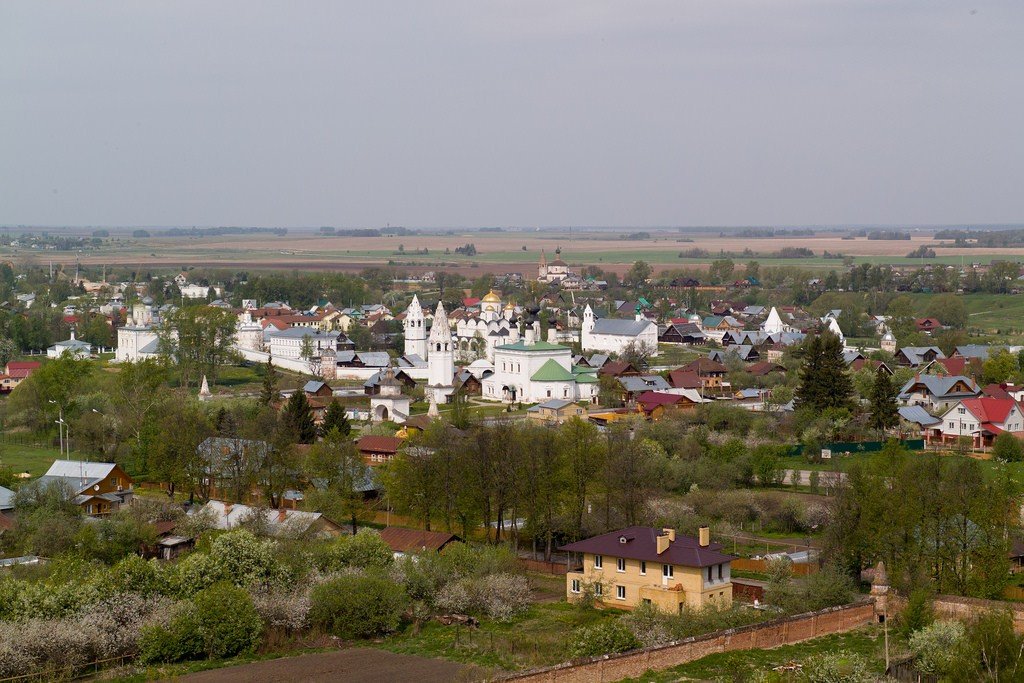
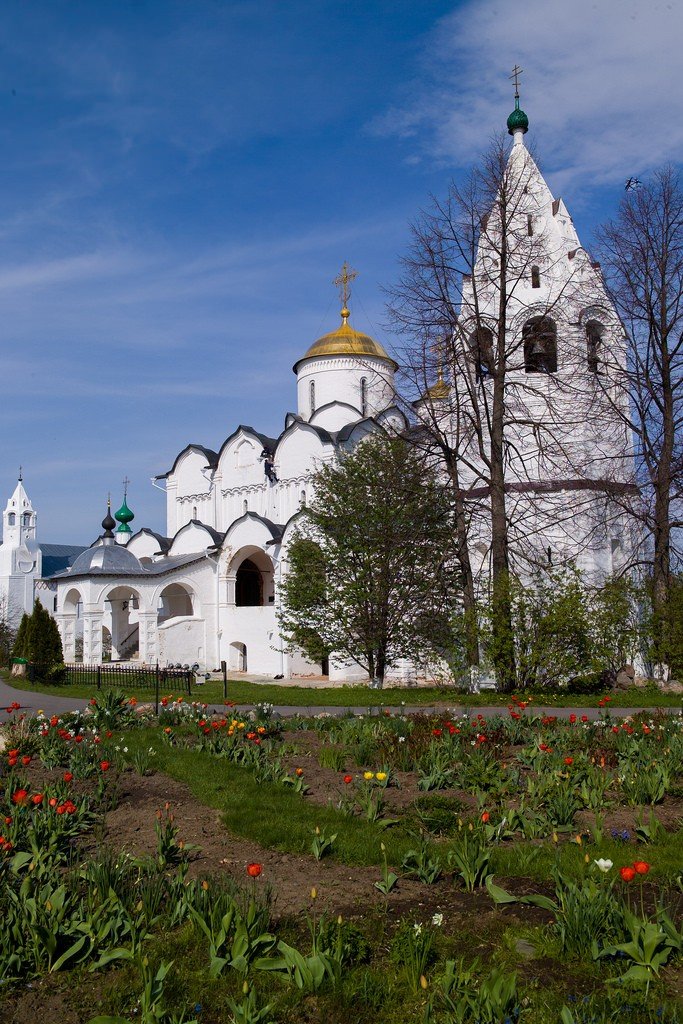
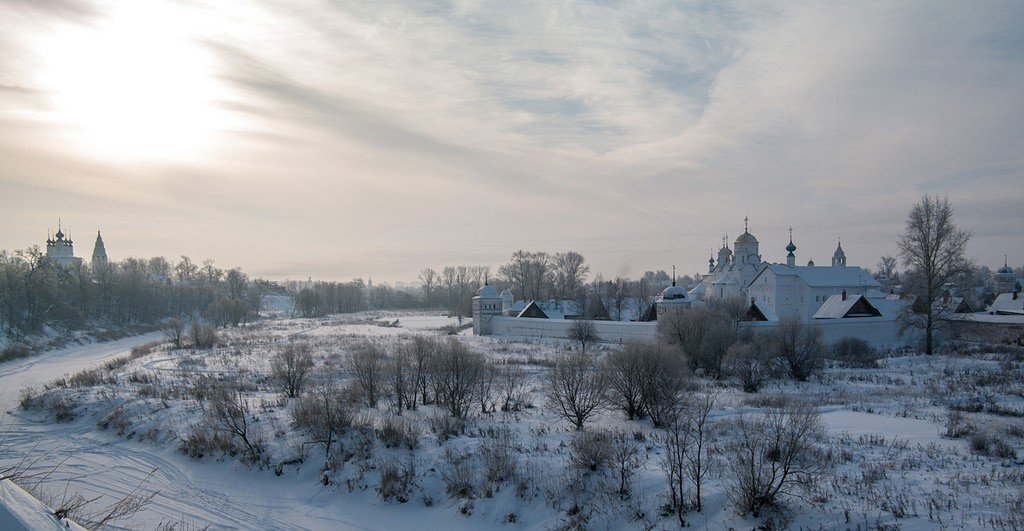
Video: Pokrovsky Monastery in Suzdal
History of the Pokrovsky Monastery
According to legends, when Prince Dmitry Konstantinovich was on his way to Suzdal from Nizhny Novgorod, his boat was caught in a strong storm. Praying for salvation, he promised to erect a monastic monastery if he survived. The prince kept his word, laying the Pokrovsky monastery in 1364. All the buildings were made of wood and subsequently remodeled many times.
Life in the monastery was revitalized when in the XV century near its walls laid the road to Moscow. The present architectural ensemble was formed in the XVI century. This period is associated with dramatic events in the family of Tsar Vasily III, who decided to go to an unheard-of violation of church rules and divorce his wife Solomonia Saburova, accusing her of infertility. Selected from 500 brides representative of the ancient boyar family for 20 years of marriage did not give birth to children, for which she was exiled to the walls of the Pokrovsky monastery.
.
In 1551, the Zachatievskaya Church on the territory of the temple complex was rebuilt in stone. The work was financed by Ivan the Terrible, who decided to honor in this way the memory of his daughter Anna. In the XVII century, the apse and the cookhouse were added, and the fence, laid in the XVI century, continued to be erected.
.
In 1923, due to the coming to power of the Bolsheviks, the riches of the Pokrovsky Monastery were plundered, and the temple complex itself was closed. In 1933-1936 on the territory of the monastery worked secret laboratory prison-type, which was popularly called “sharashka”. Here disgraced scientists worked on the development of biological weapons. Already in 1934 the object was transferred to the Institute of Biochemistry of the Red Army. In 1935, imprisoned here microbiologists B. J. Elbert and N. A. Nagaysky created the first effective serum against tularemia.
.
In the period 1950-1960s, the Pokrovsky Monastery underwent a major restoration, returning it to the appearance of the XVI century, and turned into a museum. But in the 1970s and 1980s, the monastery was converted into a hotel complex, building separate wooden houses for guests. In the buildings of the monastery opened a restaurant and a bar, and the main church was converted into a concert hall.
.
Spiritual life was revived in the monastery only in 1992. The last buildings passed into the ownership of the temple complex recently as a gift from a private individual. 11 wooden huts were used for a long time to rent to tourists (“Pokrovskaya Hotel”), but in 2008 were converted into cells for nuns and a shelter for girls.
.
Today, all the buildings of the Pokrovsky Monastery are protected by UNESCO. Interestingly, the pond, which is on the right side of the entrance to the monastery, became famous thanks to the movie “The Marriage of Balsaminoff.”
.
Solomonia Saburova – the first prisoner of the Pokrovsky Monastery
The most notorious story associated with the Pokrovsky Monastery in Suzdal was the imprisonment here of Solomoniya Saburova. This incident began a cruel tradition of exiling to the monastery unwanted wives and daughters, who by fate were involved in political intrigue.
Intending to marry the Lithuanian princess Elena Glinskaya, Vasily III began to finance the monastery, preparing a place for the life imprisonment of the first wife. On his money the wooden cathedral and the Holy Gates were rebuilt in stone, a fence and cells, which have not survived to this day, were erected. According to legends, the queen resisted her husband’s decision and even trampled with her feet the monk’s doll presented to her, exclaiming that God would not leave such injustice without retribution. .
In 1505 Solomonia Saburova was placed in the Pokrovsky Monastery under the name of Nun Sophia. This decision angered the patriarchs, who condemned the tsar’s act. Basil III managed to settle the situation only by intrigues and large donations. Thus, at his will Metropolitan Varlaam was deprived of his dignity, which was an unprecedented event in the history of Russia.
.The Jerusalem patriarch Mark has declared, that injustice of the governor will be avenged – in new marriage “evil child” surpassing on cruelty of the previous governors will be born. We can say that the prediction came true, because 4 years later Elena Glinskaya became the mother of Ivan IV, who was nicknamed the Terrible.
.
It is believed that at the time of her imprisonment Solomoniya Saburova was already pregnant and gave birth to her son George in the Pokrovsky Monastery. Fearing for the life of the tsarevich, she faked the child’s death and funeral before the Moscow clerks who arrived to check the news of the newborn. According to legend, the boy given for upbringing later became a famous robber Kudeyar.
.
In favor of this version speak the results of archaeological research A. D. Varganov. In 1935 the scientist opened the supposed grave of the royal heir in the monastery, but found there only a rag doll dressed in a child’s silk shirt, abundantly embroidered with pearls. It is possible that with the help of a fake funeral the Tsarina wanted to prove her ability to have children and shame her cruel husband, but this secret remained unsolved. An exposition devoted to this theme is presented in the Suzdal Kremlin.
.Solomonia was buried here as well. The casket with her relics is installed in the Church of the Intercession to the right of the entrance. In 1650, the queen was canonized and since then she has been revered as Sophia of Suzdal – the patroness of the city, to whom pilgrims pray for the healing of children, cure of infertility. Thanks to this, hundreds of believers come to the Pokrovsky Monastery every year, which ensures the prosperity of the monastery for centuries. It is said that Ivan the Terrible himself specially came to Suzdal to lay on Saburova’s coffin a shroud sewn by his wife Anastasia.
.
In the tomb of the monastery are the remains of other noble inhabitants of the monastery, among them: Anna Vasilchikova (wife of Ivan the Terrible), Eudokia Lopukhina (wife of Peter the Great), Eupraxia Pozharskaya, Eudokia Nagaya (wife of Vladimir Staritsky) and many others. The names and resting places can be seen in the large crypt arranged in the basement of the main temple.
- The relics of Sophia of Suzdal. Icon of the healer Panteleimon.
- The face of Saints Peter and Fevronia. .
- Icon of St. Luke of Crimea. .
- The icon of St. Nicholas the Wonderworker. .
- Icon of Matrona of Moscow.
Most of the shrines contain particles of relics of the righteous.
.
The main elements of the temple complex
Holy Protection Nunnery gives the impression of a clean, bright, benign place. In the architecture of the white-stone complex found its place both Old Russian and Western European elements.
Pokrovsky Cathedral
Pokrovsky Cathedral is the main building of the monastery, built between 1510-1514 on the site of an older wooden church. The massive building, conforming to the architectural canons of the time, is the center of the temple complex. The four-column cathedral is erected on a high basement and surrounded by a two-story gallery. From the north-west and south-west there are two wide porches with covered staircases.
.On the east side there is an attached altar part with three apse, which are divided by smooth columns with a complex carved pattern. An additional decoration are high narrow windows, visually pulling out the structure. The walls of the church are surrounded by keel-shaped vaults, and the three main drums are decorated with helmet-shaped gilded hemispheres. An additional decorative detail are deep portals with brightly carved melons.
.Initially, the interior of the cathedral was ascetic: white walls, black ceramic floor. This spectacular contrast was complemented by icons and artistic sewing by local nuns. In the lower part of the walls there are niches “pechuras” where church utensils, literature and other items necessary for the service were kept. The most valuable exhibits of the Pokrovsky Monastery are now placed in the exposition of the Russian Museum of St. Petersburg. In the basement of the building there is a tomb open to tourists and pilgrims.
.The cathedral was rebuilt many times, its interior and exterior decoration changed, but during the restoration in 1962 under the direction of I. A. Stoletov the building was given an appearance as close as possible to the model of the XVI century. The church is decorated in the style of the Christmas Church of the Suzdal Kremlin.
.Tent bell tower
From the north-west the Pokrovsky Cathedral is connected by a gallery with the Shatrovaya Bell Tower. It was built in 1515, but from the building of that period only the lower part remains. It was a tall octagonal church with a bell and a throne of the Origin of the Fair Trees, decorated with a brick vault.
.
In the XVII century the tower received an arched tier and a sharp elongated tent with three rows of hearing windows (lucarnes). In the same century, the main cathedral and the bell tower were connected by a closed-type gallery on an arched foot. The windows of the corridor are decorated with luxurious platbands and rusticated pilasters. In the belfry preserved an ancient bell, which was granted to the temple nobleman Demid Cheremisin in 1589.
.The Holy Gate with the gate church
The Holy Gate with an overgate church was erected in 1515. They simultaneously performed the role of a temple and a powerful defensive fortification. The general composition resembles the main cathedral: between the two arches for transport and pedestrians arranged a massive quatrefoil, in the upper part of which is placed a small church. Both aisles are crowned with shining gold domes, and the central turret is decorated with narrow windows and rests on a double row of keel-shaped vaults.
.
The facade is decorated with a fine pattern that resembles skillful wood carving. This element of the architectural composition has been rebuilt many times, but the original form was only found after the restoration in 1958 under the direction of A. D. Varganov. The church faces “Stromynka” – the road to Moscow.
.Zachatievskaya Church
Earlier on this site there was a wooden church consecrated in honor of the conception of the daughter of Ivan the Terrible, but after 1551 and the death of the girl it was replaced by a stone structure. It is interesting that the Pokrovsky Monastery received the right of duty-free importation of stone for the construction of this part of the complex. The large building with one chapter stylistically stands out against the background of the surrounding architecture.
.The church has an unusual decoration in the form of red rhombuses, and the walls and dome are made of small bricks in the Polish technique. Some researchers believe that the architect was a foreign master invited by Elena Glinskaya.
The basis of the structure is the refectory, located on the second floor. The main decoration was the impressive internal vaults resting on a single pillar. The hexagonal bell tower is completed from the southwest, and the church proper is located from the east and is marked by a miniature dome. The lower floor and the adjoining buildings are used as a bakery, icehouse and other auxiliary rooms. The restored cookhouse of the XVII century is a unique example of Russian architecture.
.Sudnaya hut (chancery chamber)
The chancery building was erected in the 17th century, and today it has been remodeled into a museum with historical interiors. The northern room housed the monastery archive, the central room was occupied by the chancery, and the southern part was reserved for the inquest of guilty peasants and nuns. The head of the clerical chamber was the clerk, who was in charge of the household of the shrine. In the basement of the building there is a 2×4 meter stone punishment cell where prisoners were kept.
.Towers and fence
The stone fence with towers is a separate work of art. In the northern part of the monastery complex, a fragment of the 17th century walls has been preserved. Towers with rounded domes, divided into tiers, form an isolated courtyard. Perhaps, earlier they had hipped tops and looked more ornate. The first major restoration of the fence took place only in the XX century.
.Tourists
Entrance to the territory of the Pokrovsky Monastery is free, there are excursions for donations. To visit the shrine, it is advisable to leave an application on the official website of the monastery. Most of the territory is open for inspection, except for outbuildings and cells of the servants.
.
Excursions are held from 10.00 to 17.00 on all days except Wednesday, Thursday and the last Friday of the month. Pilgrims can visit the shrine from 7.00 until the end of the evening service. Staying until morning in the monastery will not work – neither tourists nor pilgrims for overnight accommodation are not placed.
.
On the territory of the Holy Protection Convent operates a church shop, where you can buy icons, candles, spiritual and historical literature, crosses and other consecrated souvenirs. Here you can also order a prayer service, commemoration at the Liturgy, panikhida, sorokoust. On Saturdays and Sundays the refectory is open for guests, where they will offer to taste dishes that fully comply with the monastic statutes.
.How to get there
Address of the Pokrovsky Monastery: Suzdal, Pokrovskaya Street, 43-76.
.From Moscow to Suzdal is easy to get a direct bus or a flight to Ivanovo with a subsequent transfer. The local bus station is located outside the city, so it is necessary to get to the monastery by public transportation, cab or on foot. The closest bus stop to the monastery is “Seltso settlement”, from where you will have to walk a little, orienting yourself to the snow-white temples.
.Travelers by car should take the M-7 highway towards Vladimir, then turn to Ivanovo, and after 12 kilometers turn left to Suzdal. Trains also depart from the Kursk station in Moscow. There are direct flights to Vladimir, from whose station buses leave every half hour to Suzdal.
.